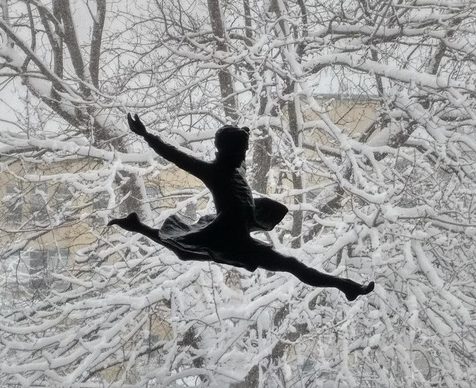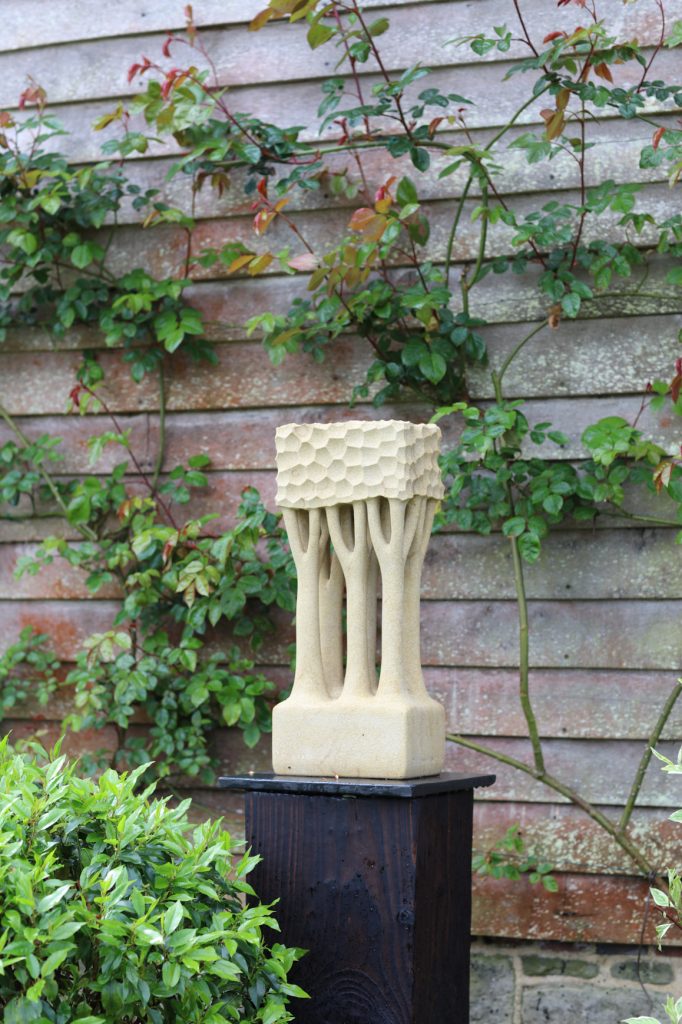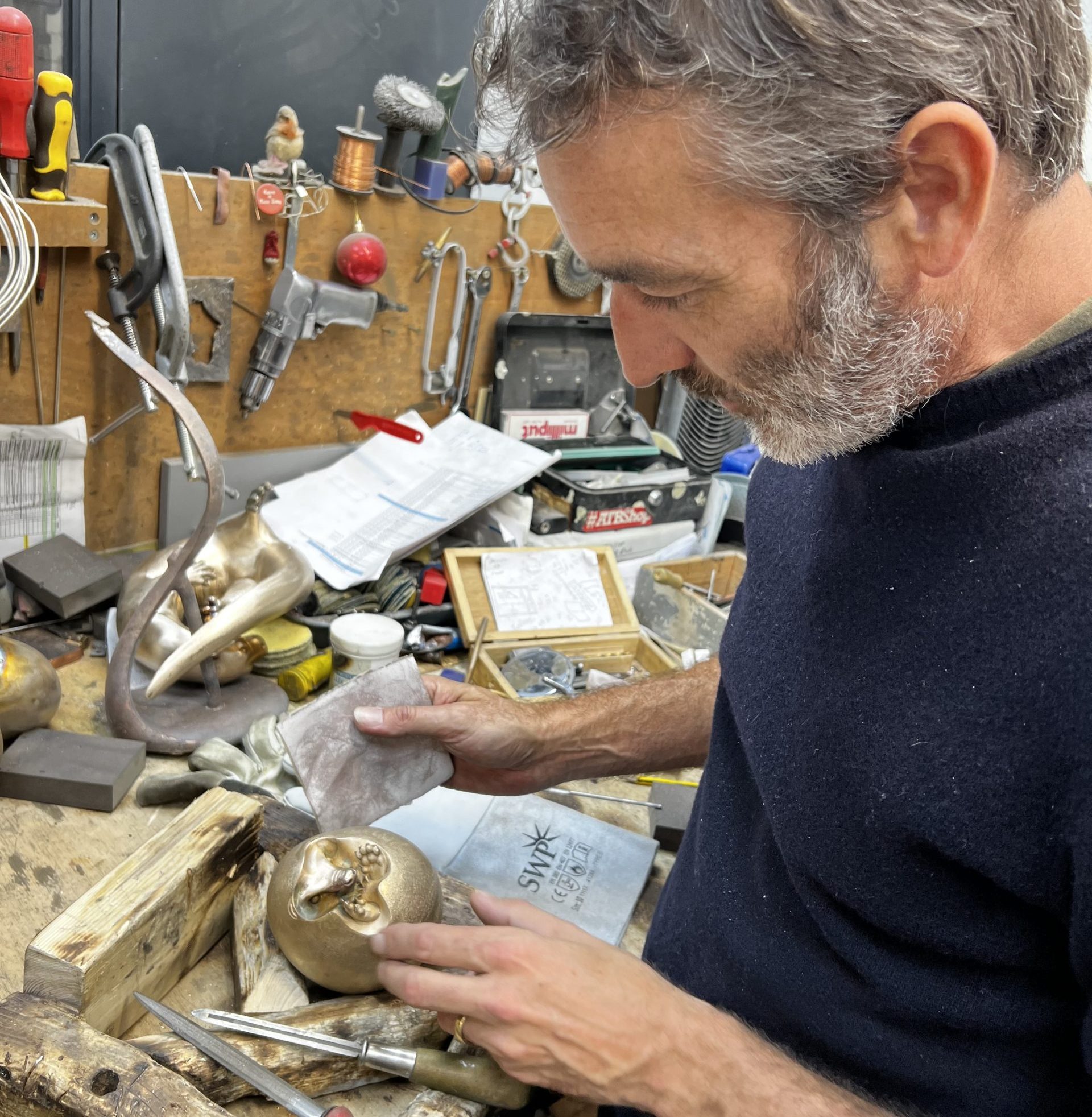Creating a sculpture is a hugely complex, physical process. In the gallery we present the finished object held up as an object of beauty and veneration. Here we explore some of the journey from raw materials to finished object whether it be a stone-carving, a bronze or a piece fabricated from wood or sheet metal. We are happy to advise on any aspect of commissioning a sculpture for a specific location and introduce clients to our sculptors to arrange studio visits.
Siting work is crucial, the way it relates to the surrounding landscape or garden. Sculpture comes alive in an outdoor space, it is continually changing with the weather, the light and the seasons. Living with work throughout the year, is a constant revelation. It glistens in the rain, is warm to the touch in summer, tinged with frost or snow in winter coming alive briefly in shafts of winter sun. Perhaps best of all is early summer when the garden comes into bloom and work is framed by verdant green shoots and blossoms.


Stone Carving
Looking at the process of creating sculpture, stone carvers are a breed apart. They have fallen in love with the ancient material of stone and the miracle of entering into it and unlocking the form within. It is an intense, physical, and messy process. Carvers throw their whole bodies into shaping beautiful objects out of such ridged, unyielding material. The stone carvers featured in this year’s exhibition include Will Spankie, Benji Lowsley-Williams, Gabriele Risso, Régis Chaperon, Guy Stevens, Aly Brown, Luke Dickinson and Paul Vanstone. Each of these sculptors has a different approach to carving but stone and its variations is universally important to them. Some, like Will and Benji enjoy working with native stones such as granite, Kilkenny limestone, Purbeck marble and Portland stone. Whilst others such as Paul, Aly and Anne, enjoy working with overseas stones such as Carrara marble, alabaster and more exotic coloured marbles.
The choice of stone is very important. It is carefully selected for its properties of working and finishing. Form, contrast, structure and finish (highly polished, rough or a contrast of the two), are taken into consideration when identifying the material. Sculptors see and unlock the form within an inanimate block. Some, like Dominic and Luke, completely smooth and work into the surface, whilst others like Jason and Mark, enjoy leaving sections of the stone in a raw state. Many sculptors will say they have no real notion of what will emerge before they begin to carve. The stone is a continually forming organic object which never stops changing. Formed millions of years ago, its time as a sculptural form is only a small part of its ancient narrative.
Bronze
Casting in bronze or resin is the opposite process, where a form is built up by modelling in clay or plaster. On a large scale it can be an equally demanding physical process. Like stone carving, bronze casting is an ancient process, reputedly invented in northern China around 1300 BC. The basic techniques of sand casting or the lost wax process have changed little over of the years. Most bronzes are now cast in specialist foundries although some artists like Stuart Anderson cast their own work in their studios. It is an incredibly complex process requiring countless stages from making the first mould, creating the wax for the lost wax process to the final patination and polishing. The artist will make frequent visits to the foundry checking all the different stages and signing and numbering the original wax before casting. The actual casting when the molten bronze is heated to 1200 degrees and poured into the mould (while the most dramatic point) is only a small part of the over all process.
Bronzes are cast in limited editions, but each edition will have subtle variations of surface, colour and texture and different ways and angles of mounting so no two are ever identical. Likewise, a bronze whether inside or outside will continue to evolve, the patina changing over time as it is an organic medium. Artists working in bronze in this show include, Jill Berelowitz, Arabella Brooke, Adam Binder and Jeremy Moulsdale.
Bronze resin, or cold cast bronze is made from a mixture of bronze powder and resin. Works can also be cast in slate resin or in the case of Jilly Sutton limestone resin. The casting process is much faster and simpler and the resulting sculpture much less expensive. The medium lends itself to large scale works for the garden and can be almost indistinguishable from bronze. However, it is much lighter, does not have the depth of patina and while not as durable as bronze will last for many years.



